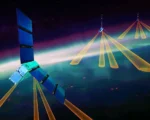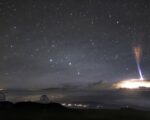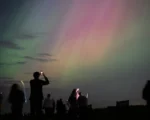A massive coronal hole, stretching approximately 800,000 kilometers across, has appeared on the sun’s surface, sending high-speed solar winds hurtling toward Earth. This vast opening in the sun’s magnetic field is allowing charged particles to escape at speeds of over 500 kilometers per second. The solar wind generated by this coronal hole is expected to reach Earth by January 31, and space weather experts predict it could trigger minor geomagnetic storm conditions. This event provides an exciting opportunity for enhanced auroral displays, particularly for observers in high-latitude regions.
The impact of this solar wind on Earth’s magnetosphere is being closely monitored by experts. According to data from spaceweather.com, a minor geomagnetic storm watch (classified as G1) has been issued by the National Oceanic and Atmospheric Administration (NOAA). This storm classification is the lowest on NOAA’s scale, ranging from G1 (minor) to G5 (extreme). While this storm is not expected to be particularly intense, it is still likely to enhance auroras, especially in polar regions, offering skywatchers a rare celestial spectacle.
The arrival of charged particles from the solar wind triggers interactions with Earth’s magnetic field, which excites oxygen and nitrogen molecules in the atmosphere. This results in the formation of vibrant auroras, more commonly known as the northern and southern lights. As the intensity of the solar wind increases, the auroras can become more vivid and widespread, with colors ranging from green to red to purple. While a G1 storm usually has limited effects on Earth, it still provides an opportunity for those in the right locations to witness this mesmerizing natural phenomenon.
Although the expected storm will be minor, fluctuations in space weather conditions can lead to variations in the visibility and intensity of auroras. Those living in areas near the poles or at higher latitudes may have the best chance to observe these brilliant light displays, while the rest of the world can still enjoy the excitement surrounding the cosmic event. The coronal hole’s activity serves as a reminder of the dynamic nature of the sun and its ongoing influence on our planet’s space environment.


















